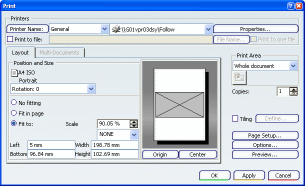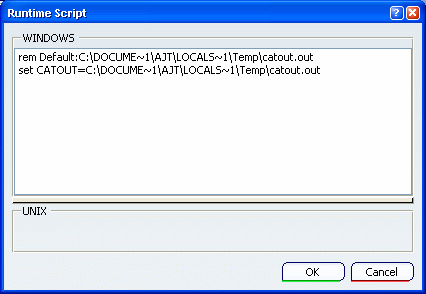Printing to a File | ||
| ||
Select PLM Access > Print... (or press CTRL+P).
The type of printer you choose determines the default settings in the Print dialog box:

Select a printer name.
Select the Print to file check box.
Enter a file name, or click File Name....
In the Print to file dialog box, type the name of the file in which you will store the image printout.
Click Save.
The file is saved with the .prn extension (the only extension available). The information in the file depends on the printer you selected in the Print dialog box.
Warning: Selecting the Print to one file check box is relevant only when printing multiple pages. When printing to a 3D PLM printer, click Properties....
In the Submission Scripts area, click Custom next to "Declaration" to specify the default output file name.
Each time you print a document, an output file is created at the location you specify in the text box.
Click Edit Script... which is now activated.

Create your own script.
You can use the following environment variable contained in the default script:
CATOUT=C:\DOCUME~1\ajt\LOCALS~1\Temp\catout_%CATPRT_DOC_SHEET_NUM%.out
where:
- C:\DOCUME~1\ajt\LOCALS~1\Temp\ is the location of the document
-
catout_%CATPRT_DOC_SHEET_NUM%.out indicates the name (stored in catout.out) and number (stored in %CATPRT_DOC_SHEET_NUM%.out) of the document. For instance, when using a PostScript printer, you can use this variable the following way: set CATOUT=e:\Temp\test_ %CATPRT_DOC_SHEET_NUM%.ps to specify that the name of the document to be printed is test.ps and is located in e:\temp.
Click OK to validate your modification in the script window then OK again to close the Printer Properties dialog box.
Access the folder in which the file has been saved and use the Copy command to print the file.
For example: copy myfile.prn LPT1 where LPT1 is the local print port.
Optional: If the printer is on a network, use the following command copy myfile.prn \\servername\printername
where servername is the name of the print server, and printername is the name of the printer.
The file is printed.